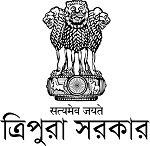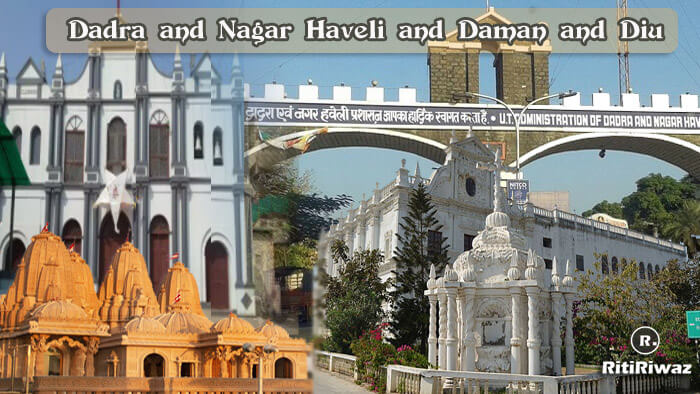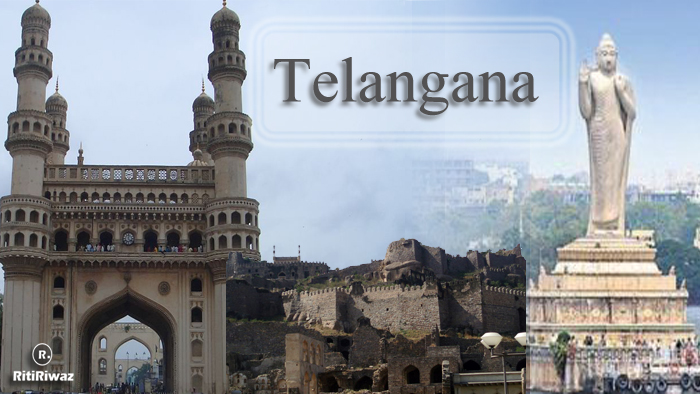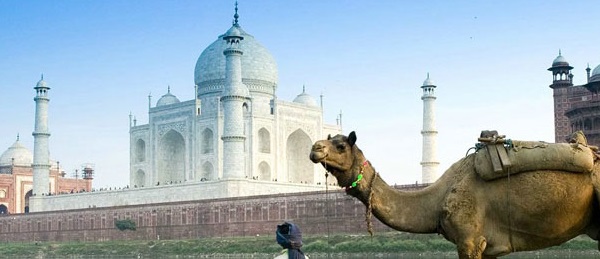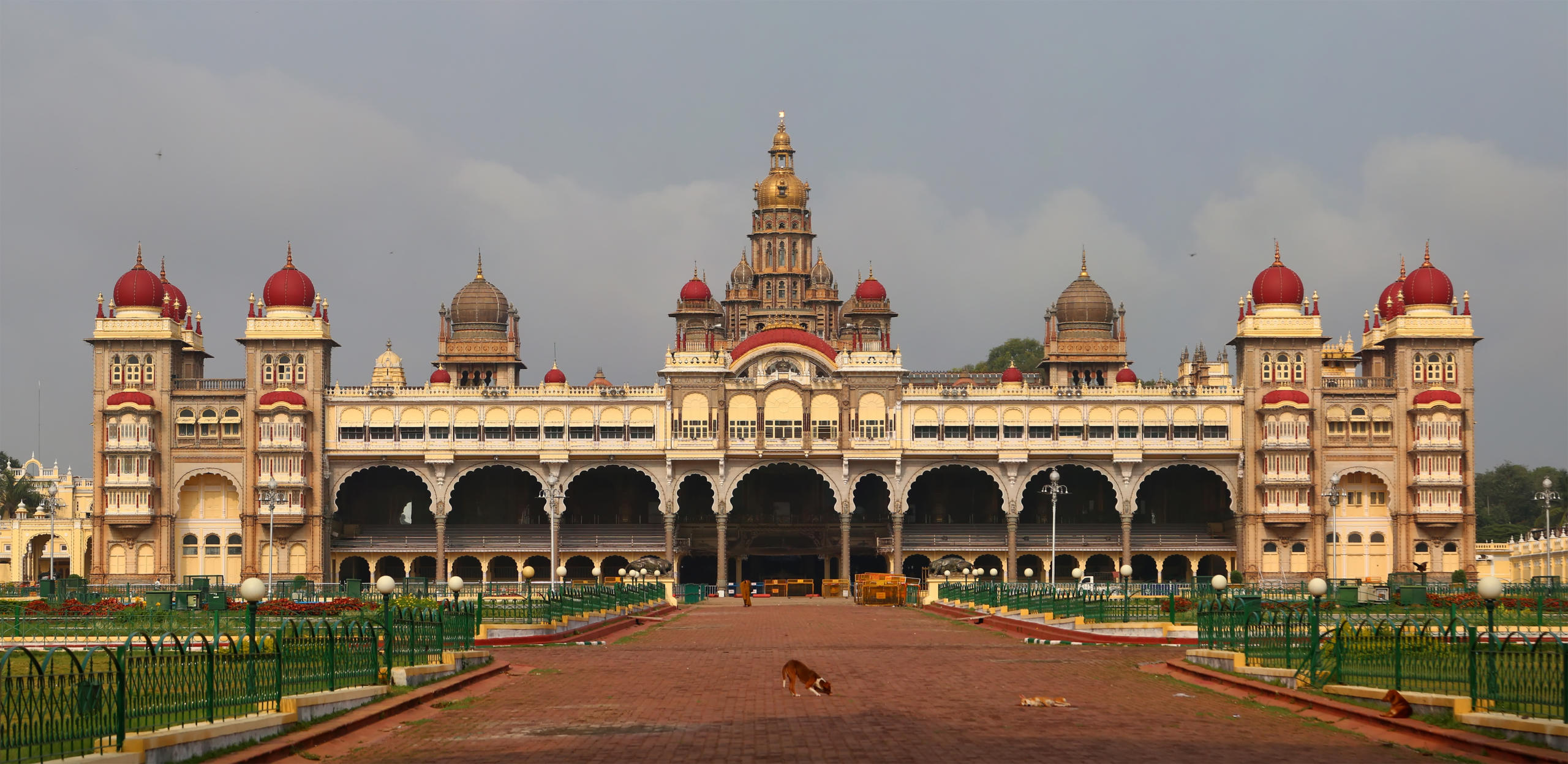Tripura – Third Smallest State
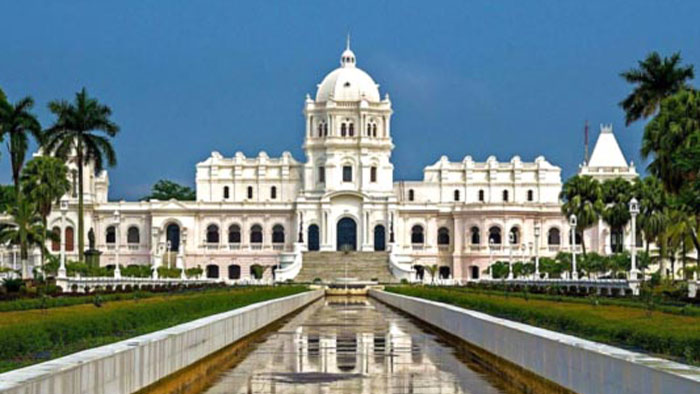
Travel to Tripura in order to explore the fascinating aspect of the state. Tripura reflects a composite culture with several ethnic groups residing in the State. Though the cultural heritage of one community differs from the other the multifaceted efforts have mingled them into a single whole giving birth to a unique cultural genre. Tripura can be termed as a Laboratory of exotic cultural synthesis. Discover the beauty of the state as you plan to travel across this magnificent Indian state. Discover the state as you plan to explore its bounteous nature.
Tripura acceded to the Indian Union in 1949. This ancient land of mysterious past is located in the North-Eastern region of India between 22.56 and 24”.32′ North latitude and 92″09′ and 92″20′ east longitude and is bounded on the north-west south and south-east by the international boundary of Bangladesh. In the east, it has a common boundary with Assam and Mizoram. 60% of the total area eco-friendly environment and pleasant weather of this panoramic tiny state with an area of about 10,500 sq. km. is inhabited largely by 19 tribes, Bengali, Manipuri, and other communities.
There is a common belief that the name of the State has originated from “Tripura Sundari” – the presiding deity of the land which is famous as one of the 51 pethos of Hindu Pilgrims. Apart from this traditional view, it is believed that originally the land was known as “Tuipra” meaning a land adjoining the water. It is fact that in days of yore the boundaries of Tripura were extended up to the Bay of Bengal when its rulers held sway from Garo hills to Arakan.

Fast Facts :
-
Area: 10,491 sq km
-
Population: 3.6 million
-
Capital: Agartala
-
Languages Spoken: Bengali, Kokborak, Hindi, English
-
Best Time to visit: September to March
-
Major City: Agartala
-
State Emblem: Uses the National Emblem of India

-
State Animal: Phayre’s leaf monkey (Trachypithecus phayrei)
-
State Bird: Green imperial pigeon (Ducula aenea)
-
State Tree: Agarwood
-
State Flower: Indian rose chestnut (Mesua ferrea)
-
State Fruit: Queen pineapple (Ananas comosus)
- Culture and Tradition of Tripura
Tourist Attractions :
Agartala
Agartala, the capital of Tripura is rich in flora and fauna and is a mini storehouse of rich cultural diversity. It gained prominence when Maharaja Krishna Manikya shifted his capital here in the 19th century. It has one of the loveliest State assemblies and a number of lakes in different parts of the city that attract many tourists.
Ujjavanta Palace
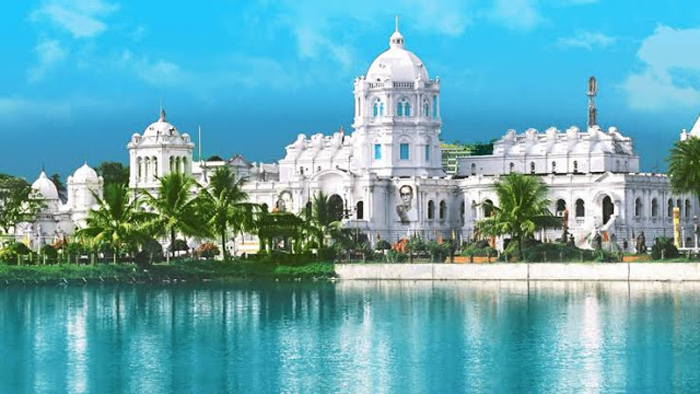
In the heart of the city, spread over an area of almost one square kilometer, this mighty palace was built in Indo-Saracenic style by Maharaja Radha Kishore Manikya Bahadur during 1899-1901. It now houses the State Legislative Assembly. The ceiling of the Chinese room, the carved doors, and the water pools arid the fountains reflect the grandeur of the bygone days.
Mata Tripureswari Temple
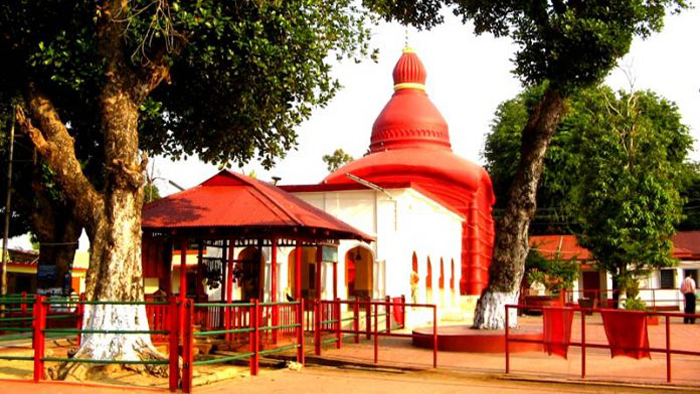
This temple is one of the 51 Pithasthans in India as per Hindu mythology. As per mythology, Lord Vishnu had cut off the body of Mata Sati into 51 pieces by Sudarshana Chakra and all these pieces fell at different places throughout the country.
Kunjaban Palace (Vaijayanta palace)
Now Raj Bhavan, the official residence of the Governor, the palace was constructed by Maharaja Birendra Kishore Manikya Bahadur in 1917. Rabindranath Tagore stayed in this palace during his seventh and last visit to Tripura in 1926.
Neermahal
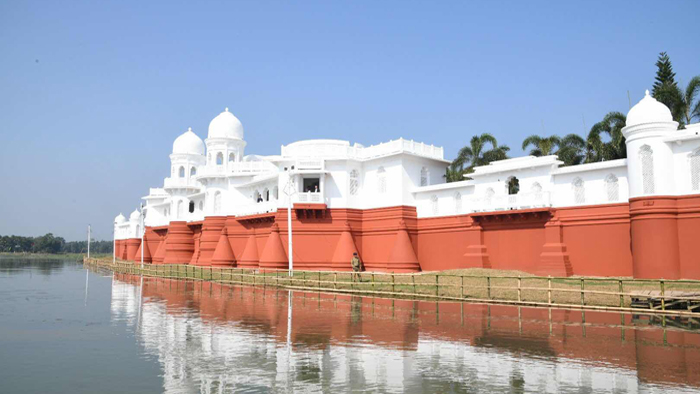
Neermahal, also known as the ‘water palace‘ is built in the middle of Rudrasagar Lake. It was the summer palace of the Maharaja Bir Bikram Kishore Manikya and was constructed in 1930. The palace shows the influence of Mughal architecture. The exterior and the garden have been renovated but the interior needs to be restored. The reflection of the domes and pavilions look marvelous in the lake. The rooms of the palace can be approached only through the boats.
Getting There :
-
By Air: Connected with Guwahati and Calcutta by Indian Airlines. The Airport is 10 K.M. away from the City.
-
By Rail: The nearest Railhead is Kumarghat on Northeast Frontier Railway. It is i475 K.M. from Calcutta-via-Guwahati.
-
By Road: 1808 K.M. from Calcutta. 597 K.M. from Guwahati, 496 K.M. from Shillong, and 308 K.M. from Silchar. Agartala is connected by regular bus services with all sub-divisional towns of Tripura. Besides, bus service is also available for Silchar, Guwahati, Karimganj, and Shillong.
Suggested Read: Formation Dates of Indian States

